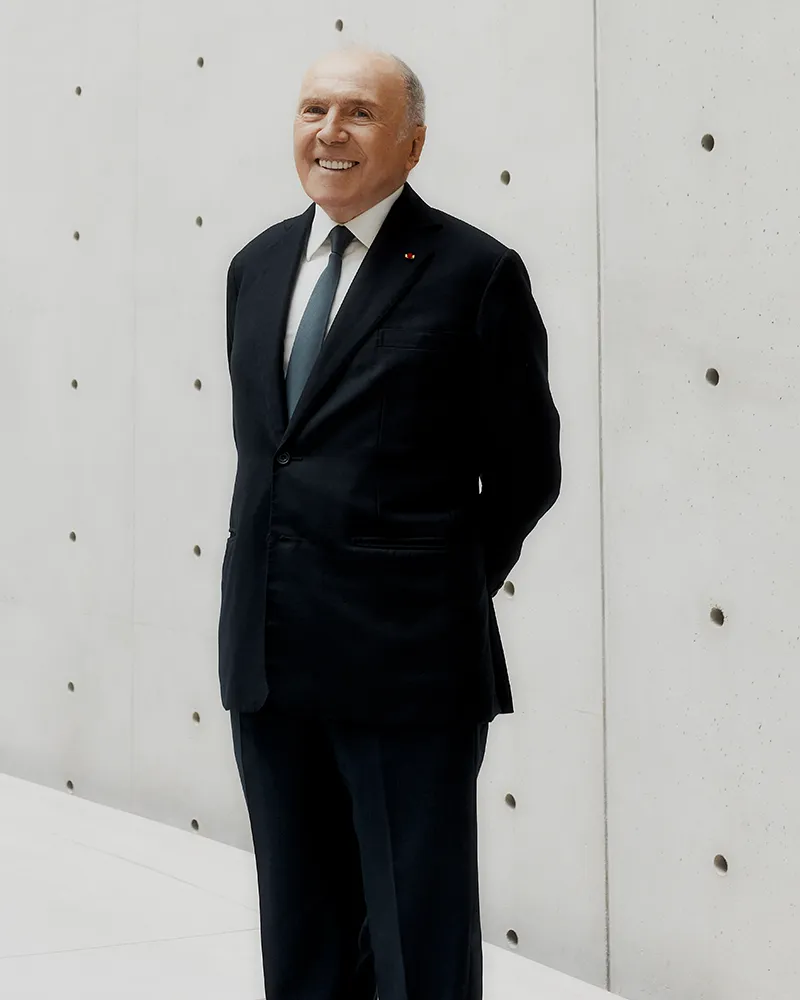
François Pinault's interview
« From time to time, I come across a work that really stands out, a striking masterpiece that seems to call out to me, and that is a very good sign. »
How does contemporary art make you feel?
It depends on the art. With some works, I feel very little or nothing at all. But from time to time, I come across a work that really stands out, a striking masterpiece that seems to call out to me, and that is a very good sign.
What happens in that first encounter with a work of art?
I’m incapable of defining what happens. I experience an intense emotion, something grabs me, calls out to me when I am truly struck by a piece of work. I’m often taken aback by this intensity and sometimes feel a little trapped because I tell myself that I cannot let this work get away. Then I embark on the process of adding it to a collection that will enable others to discover it, with the hope that they will experience the same emotion as I did when I first saw it.
What is the piece in your collection that has given you the most joy?
I hope that it will be the piece that I’ll discover tomorrow or in the years to come. Many of the works in my collection have brought me tremendous pleasure but I still hope that the most beautiful one, the one that will give me the greatest joy is still out there.
What wish do you have for the public who come to see your works?
There are lots of contemporary artworks, even some avant-garde ones, which a non-museum-going public might have some difficulty understanding. Nevertheless, I hope that they will at least try to understand, that they will open their mind in such a way that they can see things differently, in terms of their own life and world affairs. I really believe that art is the best medicine.
What makes the museum at the Bourse de Commerce so unique?
Firstly, there is its history and location in Paris and of course, the very impressive 18th and 19th-century architecture, with its extraordinary dome. This is why I wanted this building, from our past, to be restored with the utmost respect and attention to detail, in terms of what was built there a century or two previously, or even further back if we take the Medici Column. I also wanted great care to be taken in terms of Tadao Ando’s intervention. My intention was to show that this remarkable old building could exist in harmony with a radical 21st-century architectural design. The ensemble works perfectly. The same can be said for the art.
Why did you choose this old listed building in particular?
I think that by allowing today’s architects to appropriate this old building and to do something radically new with it is a way of showing that life goes on, that everything evolves. We shouldn’t reject the architecture or art of the past as there are some very beautiful things that were done in previous centuries, but at the same time, there are works of tremendous quality being created today, whether in architecture, painting or sculpture. Tadao Ando has proved this point rather brilliantly.
How did you react to Tadao Ando’s first design proposal for the Bourse de Commerce?
I was astounded because he proposed something so quickly. I was stunned by the speed of his creative abilities. I immediately accepted the direction he proposed, however. His work bears testimony to his considerable talent. At the beginning, I was surprised by this notion of a circle within a circle but after thinking about it, I rapidly realized that this was what needed to be done. He was able to express his creativity within the context of a historic building. This is what he loves doing.
What do you most appreciate about Tadao Ando’s work?
He convinced me that concrete is a noble material and that you can do incredible things with it. Tadao Ando’s work is about minimalism. Everything that is necessary is there, anything that is superfluous is no longer there, just like minimal art. Look at Ando’s creations, they have everything they need. But nothing more.